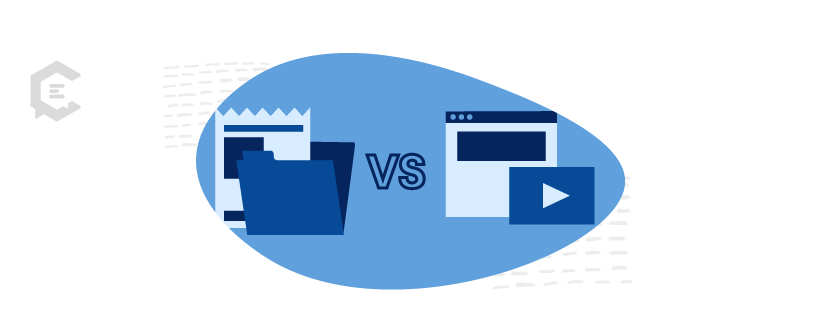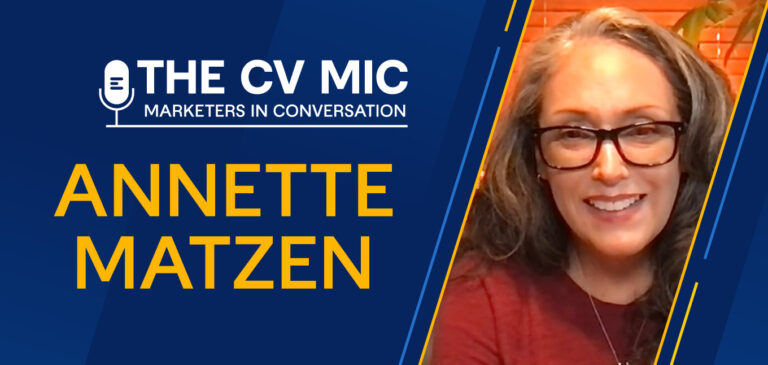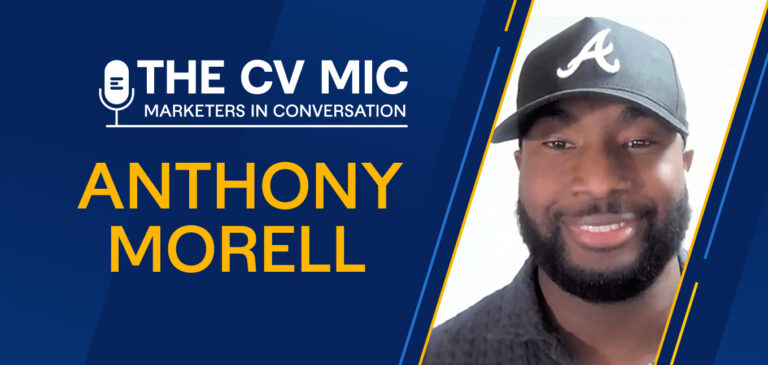How do you create successful press kits or media kits? Well, first, you determine what your goals are and then factor in details, including what you need to provide to attract, impress, or inform.
Before we get into the winners of the medium, along with some things you should never do, it would probably help to define just exactly what press kits versus media kits are, and how they can help you spread brand awareness.
Press kits vs. media kits
“A press kit helps a journalist tell a story,” said Nora DePalma, President, and CEO of Dialogue:, a public relations firm. More than that, “It contains written information such as press releases, fact sheets, backgrounders or reports as well as graphic elements such as images, charts, and video.” So, does it differ from a media kit? Yes and no.
As DePalma explains it, while the term media kit “is sometimes used interchangeably with a press kit, I would consider a media kit something different. A media kit is something that a publisher or influencer creates to help potential advertisers and sponsors understand the editorial mission and reach of the media outlet or influencer community.”
Another difference between press kits vs. media kits is that a media kit might contain a lot of hard facts and figures and everything from the number of followers to the way that translates to ad pricing. DePalma explains that the reason for including audience reach and audience demographic information is “to help potential advertisers and sponsors understand the value of investing with the platform.”
DePalma also said that “most outlets and influencers have multiple properties, so it’s helpful for the media kit to identify website monthly traffic, print readers, social media followers and newsletter subscribers.” DePalma noted that she likes to see an editorial calendar in media kits. The best ones also offer examples of different ad specifications.
And if it helps to understand the subtleties, she says to think of a media kit as a “sales lead generator for a publisher or influencer. If someone asks to see your media kit, that is a hot prospect seeking a solution to reach an audience.”
Make your press kit this one thing above all…
“The key to a press kit is to be useful,” said Peter Shankman, a corporate keynote speaker and entrepreneur who also happens to be the guy who founded HARO (Help A Reporter Out, a resource for journalists looking for sources).
And your press kit doesn’t have to be extensive. “Make it a one-pager with everything about your company; include your history, your top management, whatever.” In fact, brevity is better. “The key is can you get enough stuff that gives you the information that the reporter needs for what they’re doing. Let me be able to look at it so I don’t have to think about it. And if in theory, you can put all that information on one page with what amounts to a big flashing arrow that says press look here, that’s the goal.”
4 press kit creation best practices
- Be neutral and informative: Now isn’t the time to dazzle prospective readers with wordplay. DePalma says that you never want to leave journalists “digging to find facts vs. fluff.”
- Follow standard journalistic style in writing: For DePalma, that means featuring all the standard five W’s (who, when, what, where, why).
- Avoid jargon, grammatical errors, and stay consistent in style: When in doubt, follow AP style to be on the safe side.
- Support your press kits with great content: If earned media is your ultimate goal, you might want to consider creating fun content that lives someplace other than your press kit. In this way, you invite ongoing interaction and allow potential clients or partners to see the different facets of your brand.
Personalize as needed
Though it’s crucial to ensure that any information you’re sharing is current, relevant, and true, that doesn’t mean you need to share every single identical detail with every journalist.
“Some people have a very personalized request,” explained freelance media consultant Jono Waks. In those cases, Waks will tailor a press kit to the journalist’s needs.
“I might upload specific information relevant to their story to make it as easy as possible for them to get exactly what they need,” he explained.
What about press rooms?
If you’ve ever attended a large conference or trade show, you’ve no doubt noticed signs pointing to the press room. And while most information is currently shared in digital format — either online or via thumb drives — press rooms were once an actual room where the press could gather information or meet with corporate representatives.
Shankman reminisced about working at events like Computer World back in the ‘90s when he and his team had to assemble 300-400 folders and actual press kits.
“We put them in order, we had to alphabetize them. I can’t tell you how many press kits had mountains and mountains of information,” he said.
Modern iterations of press rooms are generally a link on a website with resources specifically for journalists ranging from press contacts and press releases to relevant statistics about companies.
And it’s unlikely that press rooms or extensive media kits will ever make a comeback, particularly in a post-COVID world.
“I still think we’ll see even less than we have till now,” Shankman said. “And there’s no reason to give anyone information they don’t need,” he added. “Besides, the fewer things you have to give people and the fewer people touch everything, the happier we’ll all be.”
That said, “There are some clever direct mail-type pieces that can include samples or fun tchotchkes sometimes sent to the press to get attention, but with more work-from-home, I would expect those to be few and far between as well,” DePalma added.
4 press kit and media kit mistakes to avoid
- Don’t forget to cite your sources. Journalists love statistics and facts, especially when presented in a way that helps them understand your brand’s relevance. Don’t drop stats into your press kit without sharing sources and attribution, it just serves to make you less trustworthy.
- Don’t use trendy slang, it’ll just make you and your company look dated. Is your product on fleek? I didn’t think so.
- Don’t cut and paste without reviewing. If someone made a mistake back in the early days of your company, don’t be the person who keeps including it in updated information.
- Don’t make your contact information difficult to find. There’s nothing as frustrating to the media as heading to a website of a potentially interesting source only to get lost in links without contact info.
You can use a media kit template like this example from HubSpot to help ensure you avoid all of these mistakes. Most templates include the space necessary to add case studies, statistics, and other highlights — all in a digestible format. Plus, you can customize it with your own branded visuals.
6 impressive press information examples
We gathered some examples of media information pages and press kits or media kits that we love.
Here’s why:
1. Microsoft Press Resources
For a company as huge as Microsoft, you’d think there would be pages and pages of information. Instead, there’s a single elegant press resources page that starts off by sharing an image gallery (along with logos) and then takes you through their executives, facts about the company, analyst reports, and more.
2. Martha Stewart’s Media Kit
While this one is downloadable and more geared toward advertisers, it includes all the hallmarks you might expect of the Martha Stewart brand. The visuals are absolutely stunning and paired with relevant information. There’s also a listing of core editorial themes as well as an editorial calendar so you understand the way your brand might be able to interact with Martha’s. Also notable is the online version, which compiles the knowledge in an easy-to-read and understandable structure.
3. Yad Vashem (the World Holocaust Remembrance Center) Press Room
One of the great challenges in presenting painful or uncomfortable information is doing it in a way that allows users to access information without added emotion. Yad Vashem has a tightly organized page that includes its mission, recent updates, press releases, and public relations information, along with access to video lectures and even their online store. There’s a lot more as well, with all of it presented professionally and simultaneously unflinchingly.
4. Adobe Newsroom
For a company that allows millions of people around the world to express their creativity visually, Adobe’s newsroom is surprisingly muted. Instead of color or flashing lights, there’s a very clear structure that allows journalists to almost immediately glean the information they might be searching for, whether it’s about investor relations or customer stories.
5. Land Rover Newsroom
How can you convey the fast-paced feeling of being in a Land Rover vehicle? By creating a newsroom that includes images of classic Range Rovers, highway shots, and updates about serving first responders. Add to that highlights of the past year’s financials along with future predictions and you have a kinetic newsroom that visually matches the brand. Vehicle models are listed along with downloadable spec sheets. It’s a fun trip packed with information.
6. British Royal Family Media Centre
There’s a reason that the British Royal family is often referred to as “The Firm.” It’s run like a well-oiled machine with incredible attention paid to the press. And unlike many press centers or press kits, they state their mission at the onset “Royal Communications is responsible for making arrangements for members of the media to cover Royal visits, events, and news stories so that they can provide accurate, timely, and informative coverage to their audiences.” From an immediately accessible area for media information to speeches and articles, the Royal Diary, and financial reports, this is one of the easiest to use and most well-organized press centers we’ve seen.
4 elements of a great press room
- Contact information is easy to find. Don’t make me search your site endlessly for information that’s nearly impossible to find.
- Crucial information is equally easy to find. Along those lines, don’t bury the data that you’re trying to share. If you want me to find your financial reports, label them and list them.
- It’s not too distracting. When on deadline, the last thing a journalist wants to do is fall into another pit of online distractions. While it’s great to highlight your product or people, it’s not an amusement park. It’s a service meant to be used and referenced.
- It’s updated often. If you have a new CEO or a policy that might be interesting, don’t wait to update that info. It makes both of us look bad.
One more thing. Simple and direct is best when sharing your company information.
“Give me digital, give it to me online,” Shankman said before reiterating his key points “Don’t waste their time, don’t waste the resources of the earth.”
Need help writing copy for press kits or media kits? ClearVoice has you covered. Talk to a content specialist today to get started.









